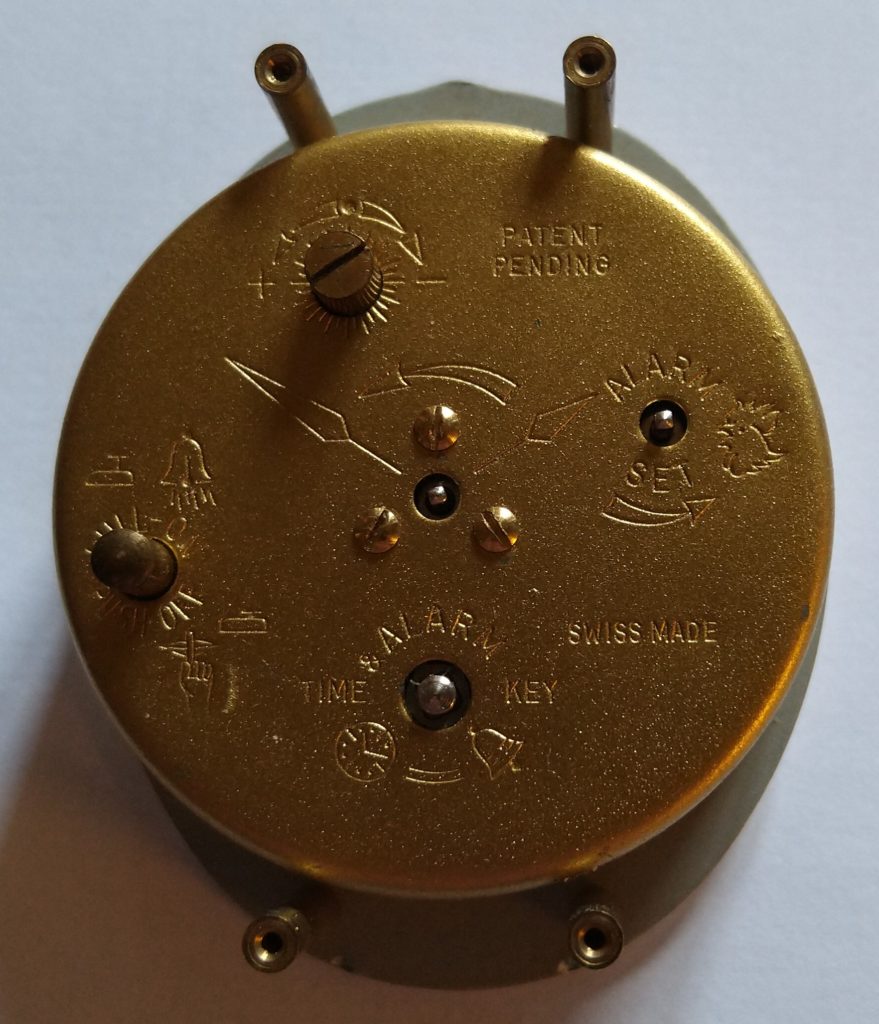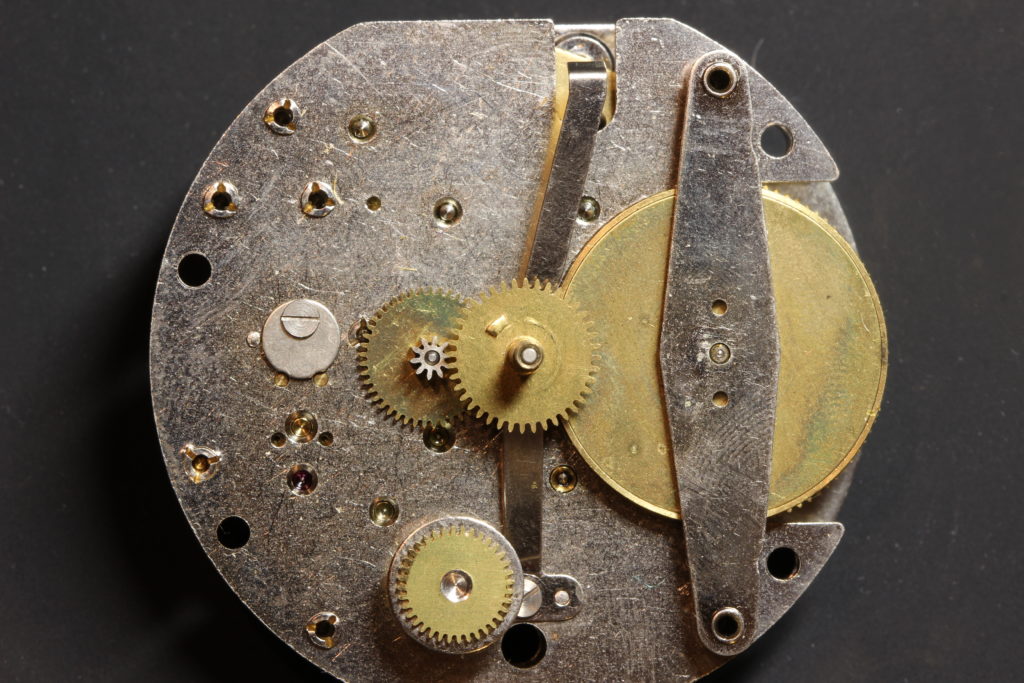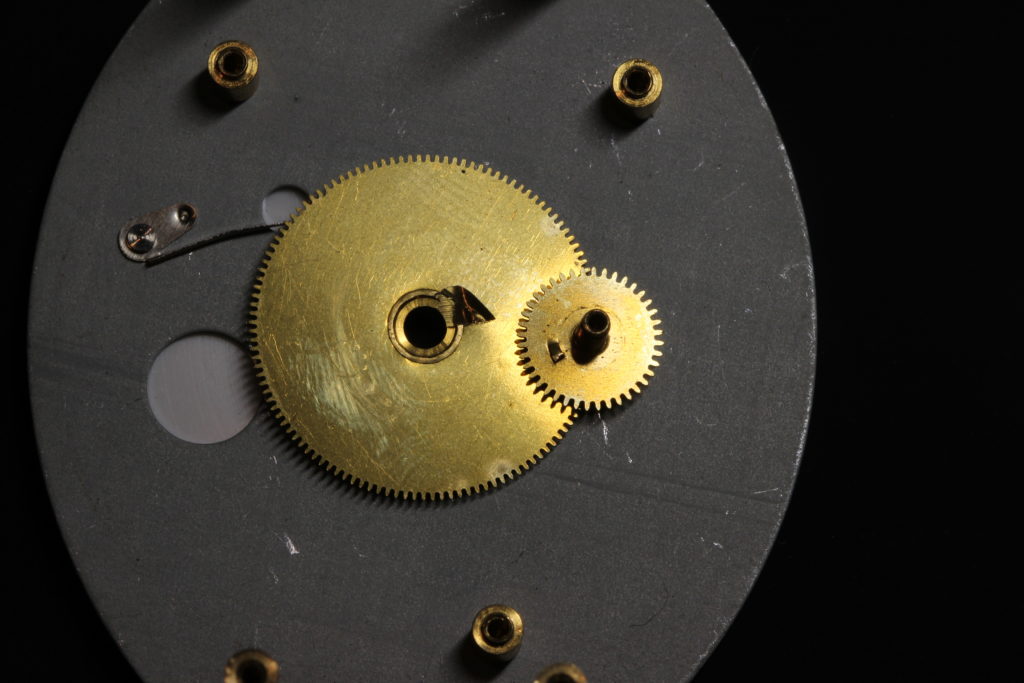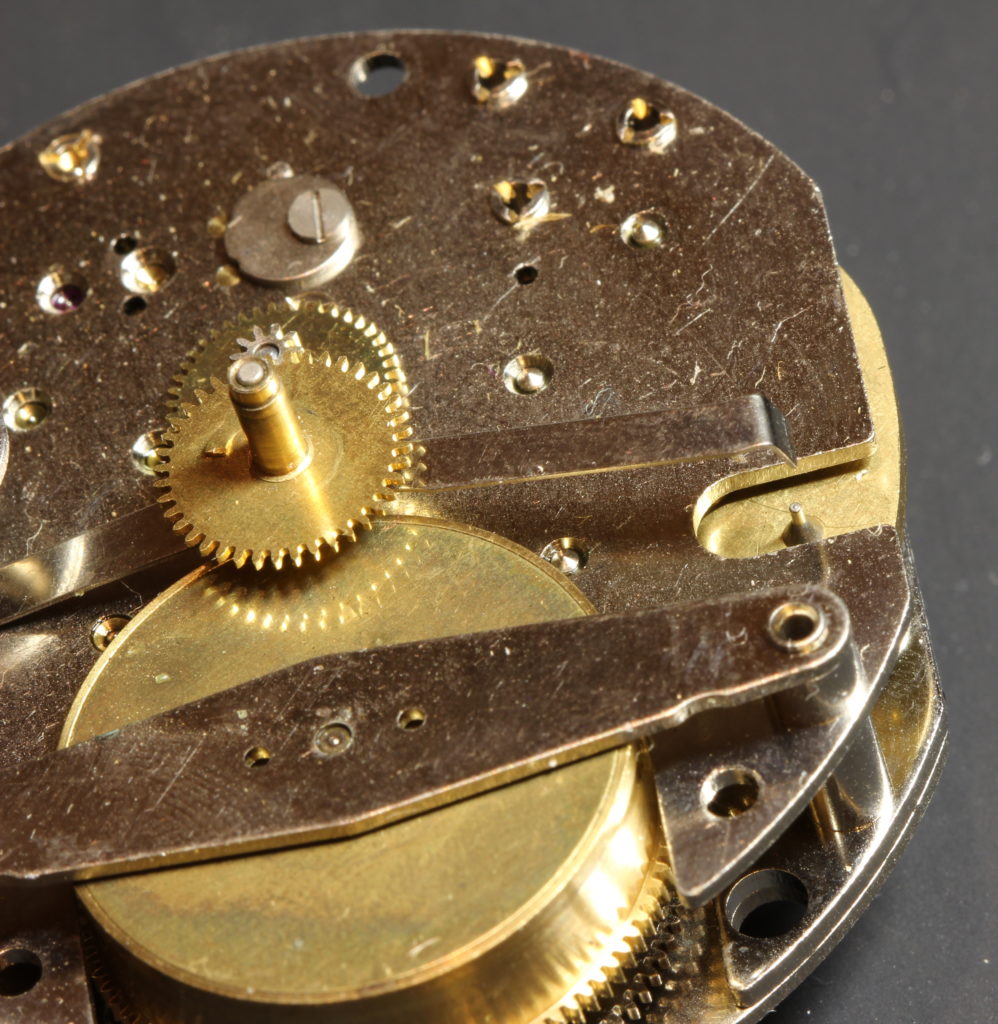This is a mechanical alarm clock. As the picture below shows, it is key wound and set, as were antique pocket watches.

The clock has a pillar architecture found in antique pocket watches rather than the architecture based on bridges and cocks found in modern watches.

The disk to set the alarm sits right under the dial and has a notch that interacts with a wheel that will be shown in the following picture.

Just under the alarm disk is a wheel with a protrusion that is pressed against the alarm disk by a spring. When the notch of the alarm disk and the protrusion of the wheel align, the spring can move up a few millimeters, which releases the alarm hammer.


The spring that pushes the wheel against the disk also keeps the alarm hammer in place until it is released.

Below this layer, the movement is divided in two, one traditional gear train for the timing function and another for the alarm function. Both gear train use the same mainspring for power, but gear with it in different places.
The star shaped wheel is the one giving impulsions to the alarm hammer. It can only turn when the hammer is free to move, which is when its pin is released by the spring on the other side of the plate.

As you can see on the picture below, the alarm function wheel interacts with the top of the barrel whereas the centre/second wheel interacts with the bottom of the barrel.
